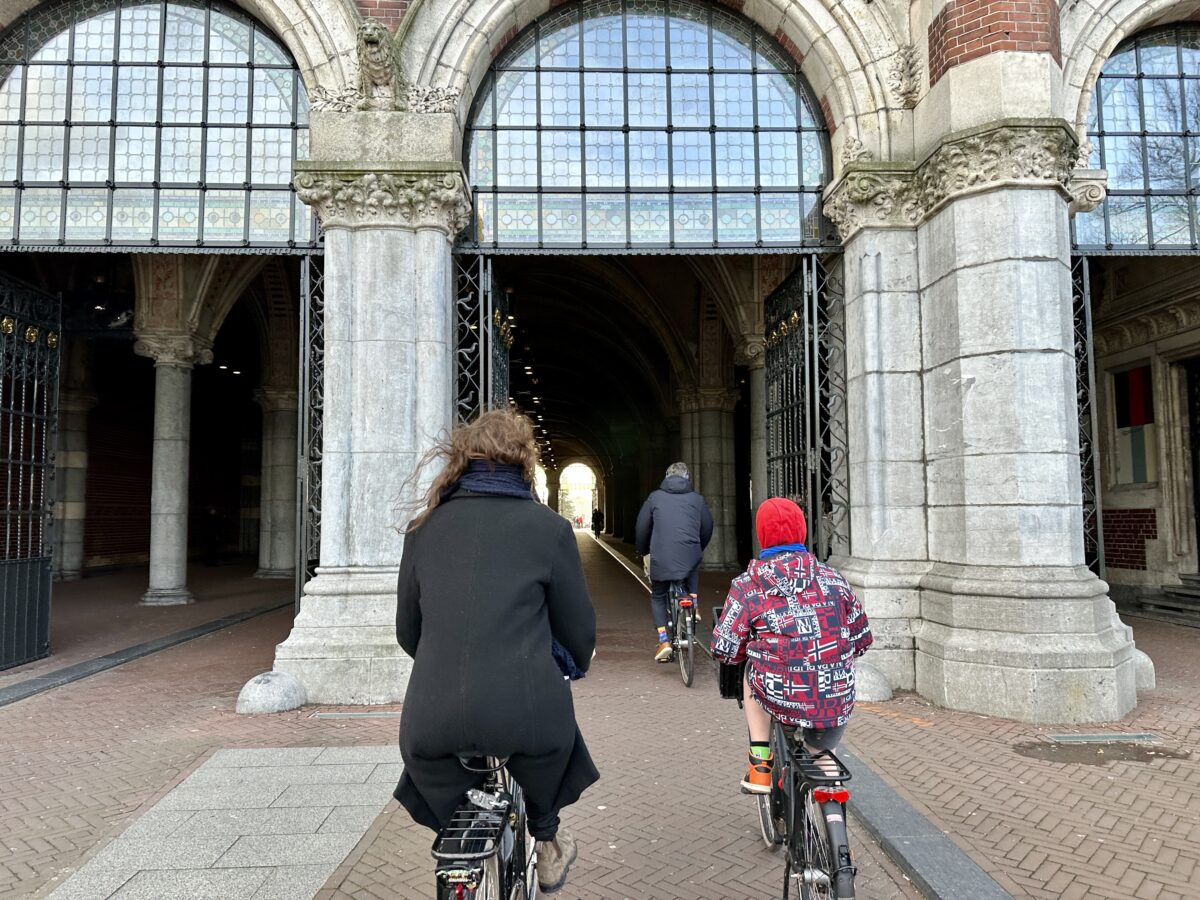
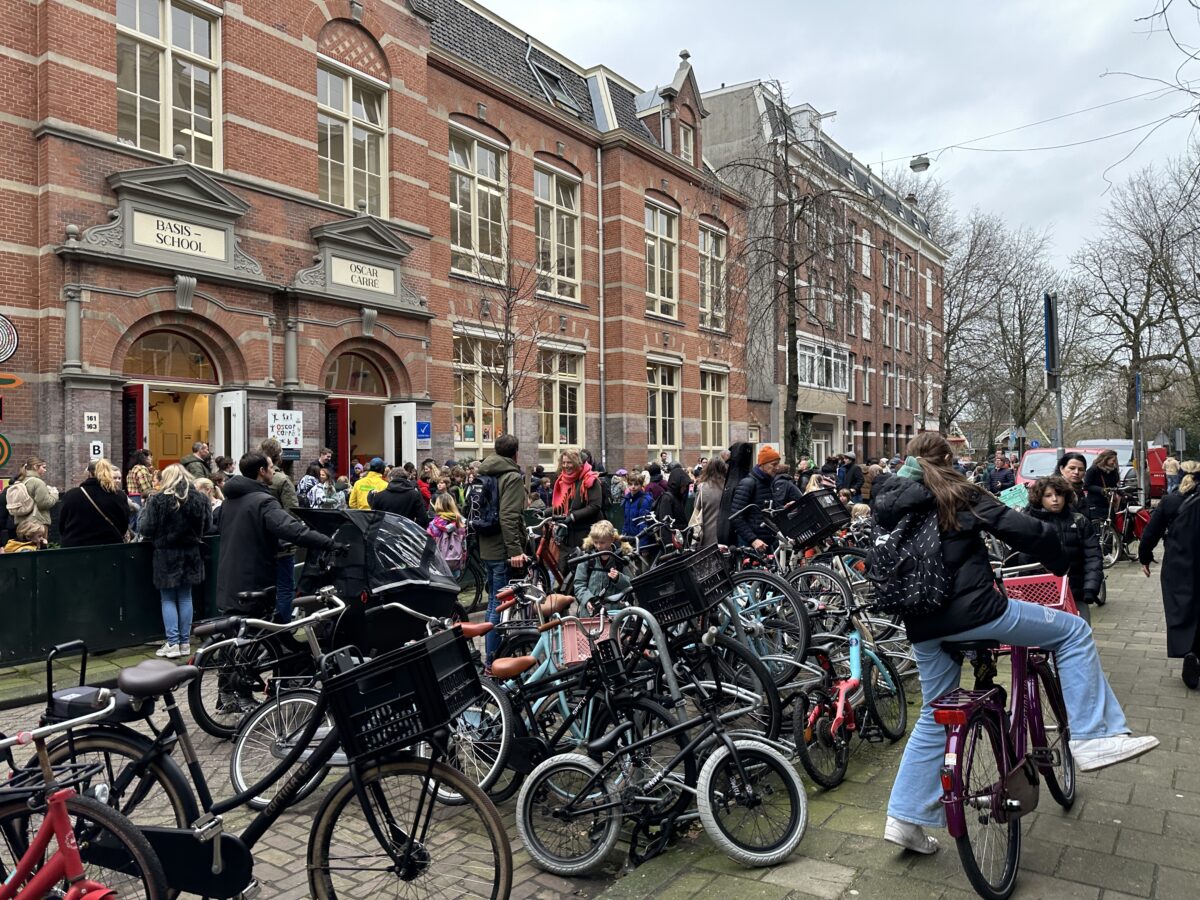

— This post is part of BikePortland Staff Writer Taylor Griggs’ trip through Europe. See previous dispatches here.
Ok, I think this is going to be my last story about The Netherlands for now. I really loved it, especially Amsterdam, as I’m sure is evident from my stories this week, but I think I’ve exhausted my capacity to write about this particular country for the time being. Plus, I’ve just arrived in Copenhagen, so I should probably try to stop thinking about Amsterdam for a while and pay attention to my surroundings here.
In the articles I’ve written from Utrecht and Amsterdam, I discussed several topics about the infrastructure (and also recounted my trouble with the law). But I realized I haven’t really written about my actual experience on a bike! So, here’s what I thought about the brass tacks of the Dutch bicycling experience.
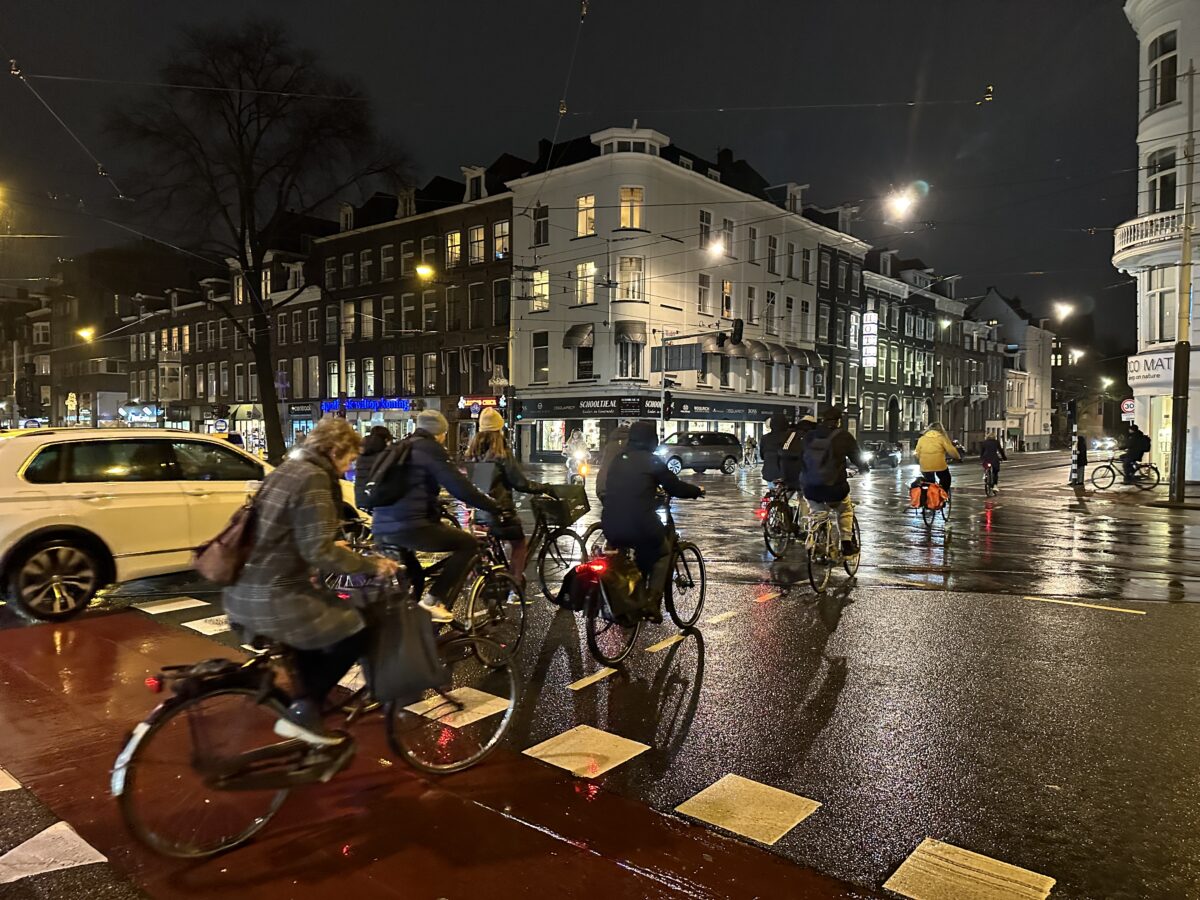
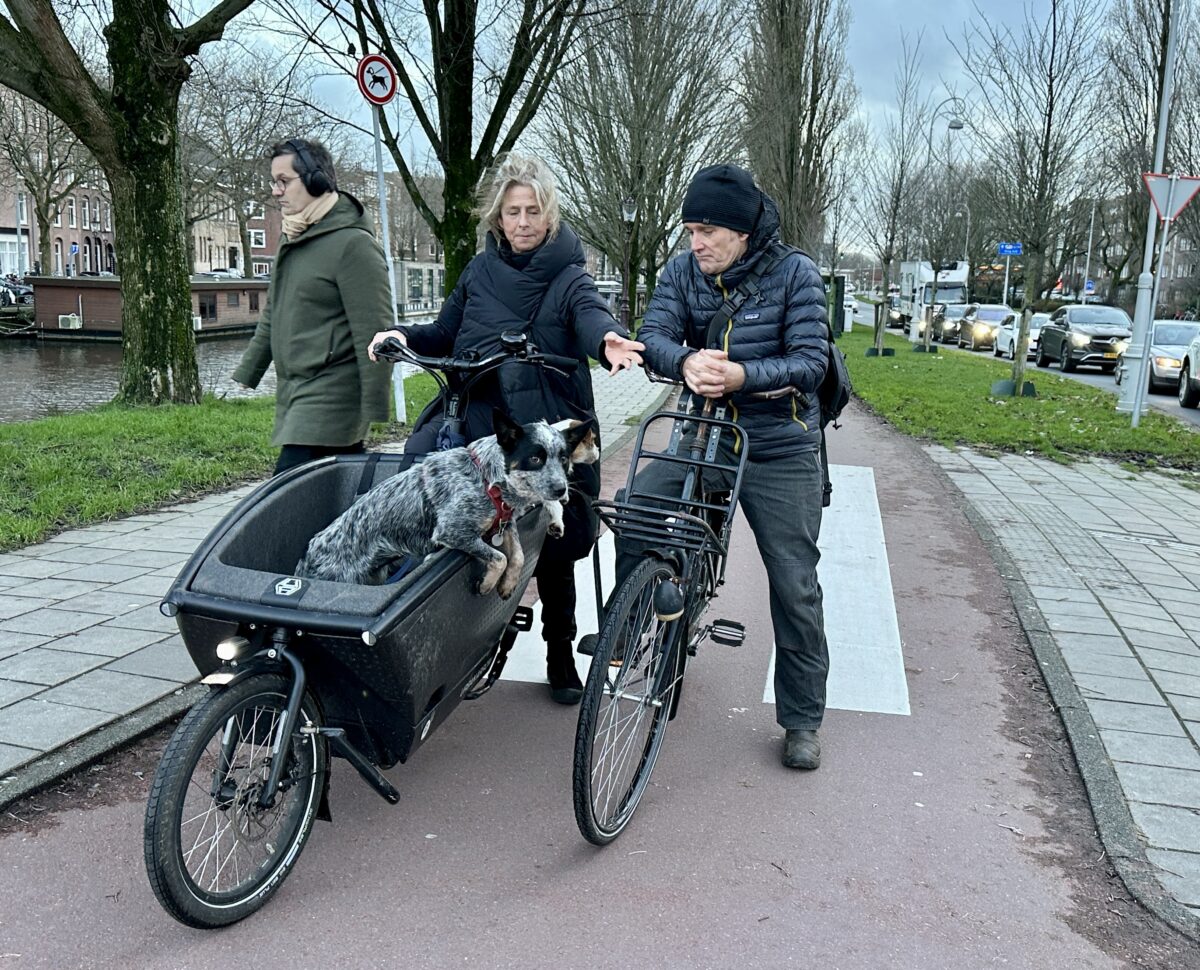
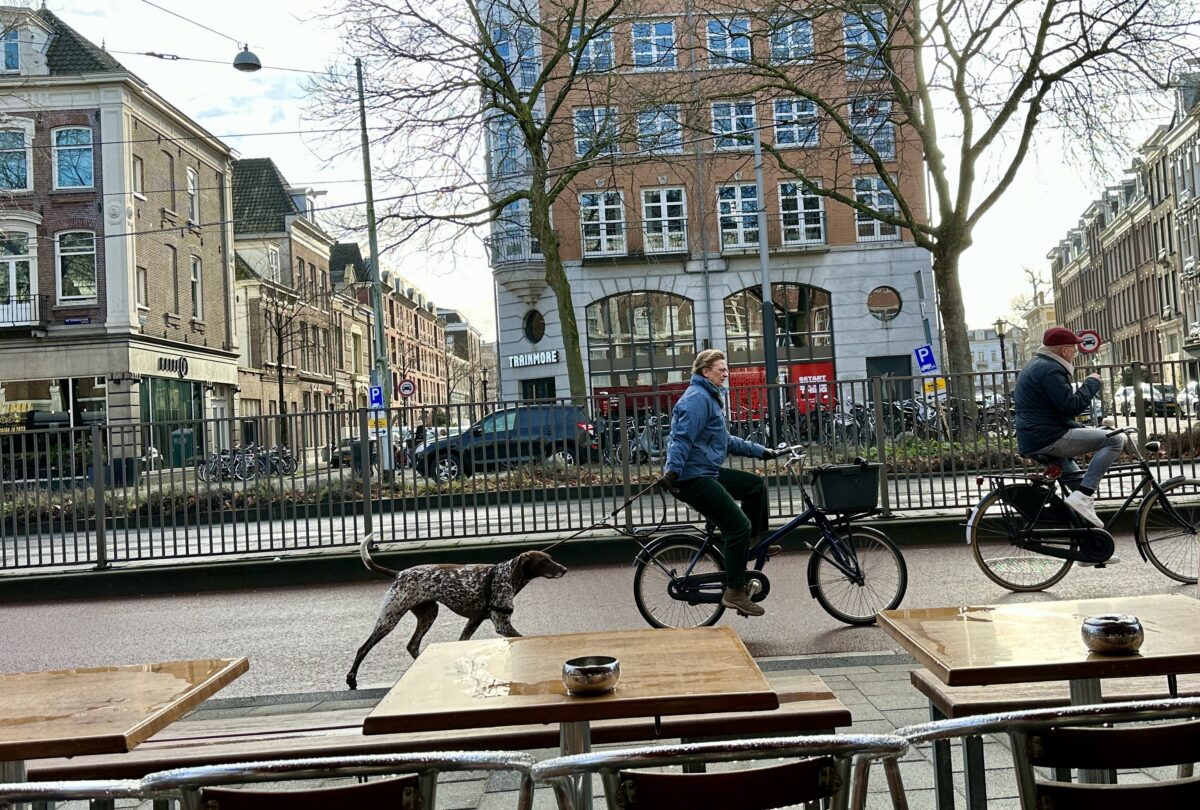
The bike itself
With the exception of my new electric bike, I’ve only ridden hybrid bikes with at least seven speeds since I stopped using training wheels. I like to maintain a relatively upright posture, but not so much that I feel like Miss Gulch in The Wizard of Oz. That’s sort of how I felt riding the Dutch-style bikes I rented in The Netherlands, and it took some getting used to — especially the braking system.
The rental shop offered bikes with hand brakes for a few more Euros, but I wanted to see if I could figure out the coaster brakes, so I opted for the cheaper one. At first, this was difficult, and along with attracting the attention of law enforcement, I also almost crashed into a parked car and several other things because I forgot how to stop. But once I got used to it, I realized I actually like this way of braking for traveling around flat areas.
I am prone to overusing my front brake while biking in Portland because I’m using my right hand to take photos, which is really not ideal. With coaster brakes, you can use your hands a lot more freely without risking flipping over the handlebars. Now, I don’t think this would work for me in places where you need to climb up and down hills any steeper than a canal bridge (yes, fixie people, I know!), but in Amsterdam it makes complete sense.
I think it’s kind of old-fashioned to sit completely upright on a bike (these bikes are often referred to as ‘omafiets,’ or ‘grandma bikes’), but the Dutch are able to pull it off with style. This posture definitely allows you to dress in more restrictive clothing while biking, so it’s perfect for people commuting to work.
Ultimately, this style of bike is perfect for flat Amsterdam, but there’s a reason people in Portland have their preferred alternatives. I don’t hate it, though!
In Utrecht a man who wanted to pass me on a bike path gently pushed me out of his way without saying a word… it was strange!
Locking up
Most Dutch bikes utilize a multi-prong locking system. The ring lock (a.k.a wheel lock) element enables you to lock just your back wheel, preventing people from quickly riding off with it when you just want to leave it alone for a little bit or can’t find anything to lock it to (a common problem with the volume of bikes in the country). For more security, you can use a chain bike lock that’s mounted to the bike to lock it to a rack.
Locals will tell you there’s a huge problem with bike theft in Amsterdam, but there are so many bikes in the city that if someone wants to steal one, they’re not going to take it if they can’t quickly ride away on it. And I must say that with the number of expensive Urban Arrows and VanMoofs I saw parked on the streets late at night, people must either feel confident it won’t get stolen or be willing to buy a new one if it does.
Ultimately, I’m probably just going to keep using my u-lock in Portland — I’m too paranoid to leave my bike untethered to an immovable object. But for some added security, maybe the ring lock method should get some traction in the U.S.?
The bike culture
I was a bit afraid I would stick out like a sore thumb in Europe with my American biking habits, but I think I managed to figure out how to roll with the crowd pretty easily. The only somewhat negative interaction I had, other than my conversation with the cops, was in Utrecht when a man who wanted to pass me on a bike path gently pushed me out of his way without saying a word. I didn’t fall over and it didn’t even seem mean-spirited, but it was strange!
Otherwise, people used their bells to communicate, which is something I think we ought to more fully embrace in the U.S. The only problem is that with all the car traffic in Portland, it can be hard to hear a bell ringing.
It was great to see people of all ages riding their bikes, looking relaxed instead of constantly stressed about safety. And I don’t think I saw a single soul wearing a helmet — it’s not necessary!
So, onwards I go on my journey. Thanks for reading my dispatches so far, and hopefully you don’t get tired of them, because I plan to keep them coming.


